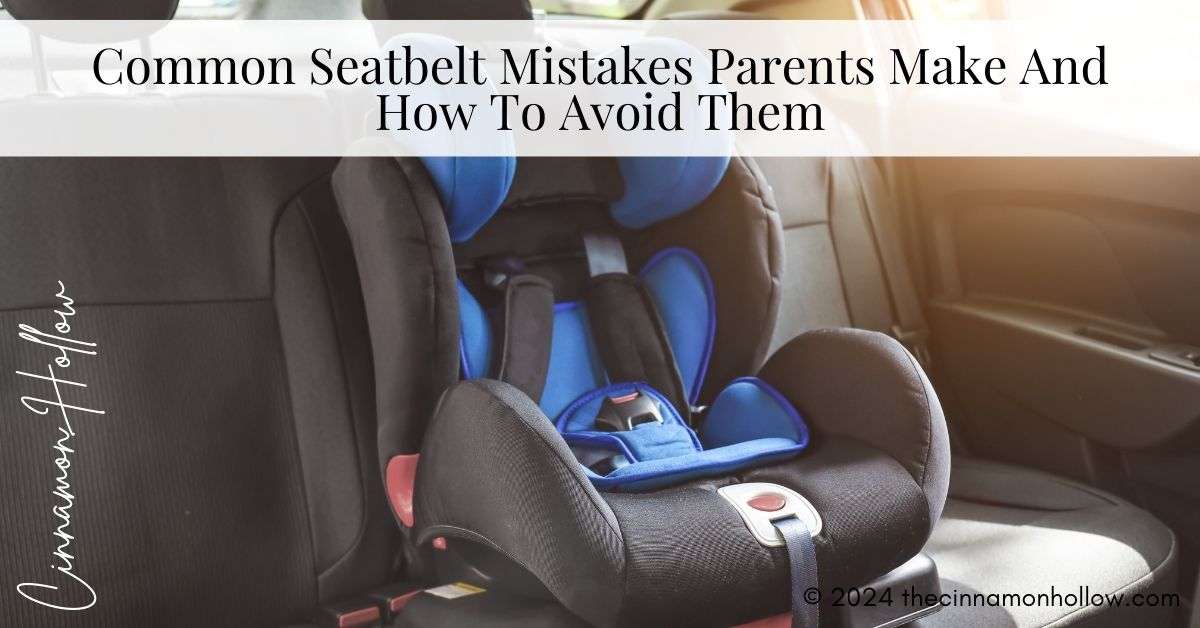As a parent, ensuring your child’s safety while on the road is one of the most important responsibilities you have. Car accidents are unfortunately a leading cause of injury and death for children, but many of these accidents could be prevented with the correct use of seatbelts and car seats. Even if you’re doing your best to buckle up your child, small mistakes can make a huge difference in how well a seatbelt or car seat works in the event of an accident.
The following are some of the most common seatbelt mistakes parents make and actionable tips on how to avoid them. By understanding and addressing these errors, you can ensure your child is safely secured every time they’re in the car.
1. Incorrect Harness Positioning In Car Seats
One of the most frequent mistakes parents make is improper harness positioning in car seats, whether rear-facing or forward-facing. Harness straps that are too loose or positioned incorrectly can fail to properly restrain your child and prevent injury in the event of a crash, according to specialized car accident attorneys.
Common Mistakes:
- The harness straps are too loose, leaving too much space between the straps and the child’s body.
- The shoulder straps are positioned too high or too low, preventing the harness from properly restraining the child’s torso.
- The chest clip is too low or too high, which can cause serious injuries in a crash.
How to Avoid It:
- For rear-facing car seats, the harness straps should be at or below your baby’s shoulders. For forward-facing seats, the straps should be at or above the shoulders.
- Ensure the harness is snug against your child’s body. You should only be able to fit one finger between the straps and your child’s chest.
- Always position the chest clip at the level of your child’s armpits to keep the harness straps correctly positioned on their body.
- Look for a car seat harness adjuster or seat belt clip to ensure the straps stay securely in place and are easy to adjust as your child grows.
2. Incorrect Use Of Booster Seats
Once your child outgrows their forward-facing car seat, they will need a booster seat. Many parents make the mistake of either skipping the booster seat too early or using it incorrectly, both of which can compromise your child’s safety in the car.
Common Mistakes:
- Moving your child to a booster seat before they are ready, typically when they haven’t yet reached the minimum height or weight requirements.
- Using the vehicle’s seatbelt incorrectly with a booster seat, such as letting the lap belt ride up over the stomach rather than resting low on the hips.
- Allowing the shoulder belt to rest on your child’s neck or face instead of across the chest.
How to Avoid It:
- Keep your child in a 5-point harness seat for as long as possible until they exceed the seat’s height or weight limit. After that, transition to a booster seat.
- Ensure your child’s lap belt stays low across the hips (not the stomach), and the shoulder belt crosses over the center of the chest and shoulder—not the neck or face.
- Make sure your child is tall enough to sit with their back against the vehicle seat and their knees bent comfortably at the edge of the seat.
- Invest in a high-back booster seat that provides extra support and positioning for the shoulder belt. The extra backrest can also provide added protection in side-impact collisions.
3. Not Using The LATCH System Properly
The LATCH (Lower Anchors and Tethers for Children) system is designed to make installing car seats easier and more secure. However, many parents don’t fully understand how to use LATCH correctly, or they may forget to secure the top tether when using a forward-facing seat.
Common Mistakes:
- Failing to use the top tether strap when installing a forward-facing seat.
- Over-tightening or under-tightening the LATCH connectors, which can compromise the seat’s stability.
- Installing a car seat with the vehicle seatbelt instead of using the LATCH system when it’s available.
How to Avoid It:
- Always use the top tether when installing a forward-facing car seat. This is critical for preventing the seat from tipping forward in a crash.
- Follow the manufacturer’s instructions for tightening the LATCH system—make sure it’s secure but not over-tightened.
- If your car’s LATCH system is incompatible with your car seat, or if the LATCH weight limit has been exceeded, use the seatbelt to secure the seat instead.
- A LATCH belt extender can help make the installation process easier and more secure if you have a larger vehicle or a car seat with a bulky base.
4. Reclining the Car Seat Too Much (Or Not Enough)
A common mistake, especially with newborns and infants, is not setting the correct recline angle for rear-facing car seats. Too much recline can cause your baby’s head to fall forward, blocking their airway. Too little recline can put unnecessary pressure on their spine.
Common Mistakes:
- Over-reclining the seat, leading to the baby’s head dropping forward.
- Not reclining enough, causing the baby’s body to be more upright than recommended.
- Not checking for a proper recline angle after installation.
How to Avoid It:
- Follow the car seat manufacturer’s instructions for the proper recline angle. Many car seats come with a built-in level indicator to guide you.
- For infants, the seat should recline at a 30-45 degree angle, so your baby’s head remains supported and their airway remains open.
- Always double-check the recline after installing the seat. Some car seats come with a recline adjustment lever or knob that allows you to fine-tune the angle.
- Use a recline angle indicator or leveling tool if your car seat doesn’t have one built-in. This can help you ensure that your baby’s seat is positioned correctly every time.
5. Leaving Kids Unbuckled In The Back Seat
Once your child outgrows their car seat or booster seat, it’s tempting to think that regular seat belts are enough. However, many parents make the mistake of not properly securing their child in the back seat with a seatbelt when they transition out of their booster seat.
Common Mistakes:
- Allowing your child to ride unbuckled or with the seatbelt in the wrong position.
- Not reinforcing the importance of always wearing a seatbelt in the car, regardless of the distance or speed.
How to Avoid It:
- Make sure your child is always wearing their seatbelt properly—lap belt across the hips and shoulder belt across the chest.
- Never let your child ride in the front seat until they are old enough, as airbags can be dangerous to young children.
- Consider a seatbelt adjuster that helps properly position the shoulder belt, making it more comfortable and safe for younger children who may have outgrown their booster but are still too small for adult-sized seatbelts.
Keeping your child safe in the car is non-negotiable, and making sure they’re properly secured with a seatbelt or car seat is the first step toward protecting them on the road. By avoiding these common seatbelt mistakes and following best practices for car seat installation, you can ensure that your child remains safe during every car ride. The right car seat, a little bit of education, and some attention to detail can go a long way in making sure your little one stays secure. So, check those straps, ensure proper positioning, and drive with peace of mind knowing your child is as safe as possible.









